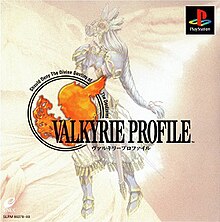
In Norse mythology, Freyja is a goddess associated with love, beauty, fertility, sex, war, gold, and seiðr. Freyja is the owner of the necklace Brísingamen, rides a chariot pulled by two cats, is accompanied by the boar Hildisvíni, and possesses a cloak of falcon feathers. By her husband Óðr, she is the mother of two daughters, Hnoss and Gersemi. Along with her twin brother Freyr, her father Njörðr, and her mother, she is a member of the Vanir. Stemming from Old Norse Freyja, modern forms of the name include Freya, Freyia, and Freja.

In Norse mythology, Valhalla is described as a majestic hall located in Asgard and presided over by the god Odin. There were five possible realms the soul could travel to after death. First was, Fólkvangr which was ruled by the goddess Freyja. Second, was Hel, ruled by Hel, Loki's daughter. The third realm was that of the goddess Rán. The fourth realm was the Burial Mound where the dead could live, and the last realm was Valhalla, ruled by Odin and was called the Hall of Heroes. The masses of those killed in combat, along with various legendary Germanic heroes and kings, live in Valhalla until Ragnarök, when they will march out of its many doors to fight in aid of Odin against the jötnar. This eternal battle and life in Valhalla was a reflection of greater Viking ideals, for "what finer way to exist other than fighting, killing, and feasting with your erstwhile enemies, united in the common enterprise of training for the final battle”. Valhalla was idealized in Viking culture and gave the Scandinavians a wide spread cultural belief that there is nothing more glorious than death in battle. The belief in a Viking paradise and eternal life in Valhalla with Odin gave the Vikings a violent edge over the other raiders of their time period.
In Norse mythology, Gungnir is the spear of the god Odin. It is known for always hitting the target of the attacker regardless of the attacker's skill.
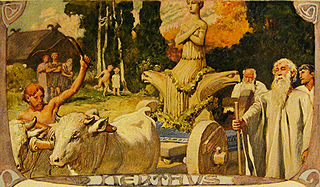
Germanic mythology consists of the body of myths native to the Germanic peoples, including Norse mythology, Anglo-Saxon mythology, and Continental Germanic mythology. It was a key element of Germanic paganism.

Valhalla is a Danish comic series, which offers a comedic view of the gods of Norse mythology. Originally commissioned for and published by Interpresse, it has been published by Carlsen Comics since 1978. In 1986, Valhalla was adapted into an animated feature film the studio A Film. On October 10, 2019, a more serious and dark live action adaptation was released.
The Asgardians or Gods of Asgard are a fictional humanoid race of gods appearing in American comic books published by Marvel Comics. Some are taken from mythology while others are original creations.
The Norse mythology, preserved ancient Icelandic texts such as the Poetic Edda, the Prose Edda, and other lays and sagas, was little known outside Scandinavia until the 19th century. With the widespread publication of Norse myths and legends at this time, references to the Norse gods and heroes spread into European literary culture, especially in Scandinavia, Germany, and Britain. In the later 20th century, references to Norse mythology became common in science fiction and fantasy literature, role-playing games, and eventually other cultural products such as Japanese animation. Storytelling was an important aspect of Norse mythology and centuries later, with the rediscovery of the myth, Norse mythology once again relies on the impacts of storytelling to spread its agenda.

Valkyrie Profile 2: Silmeria is the second installment of the Valkyrie Profile series, which was developed by tri-Ace and published by Square Enix. It was released for PlayStation 2 in 2006 in Japan and North America, and in 2007 in Australia and Europe. It went on to be re-released as a Square Enix "Ultimate Release".
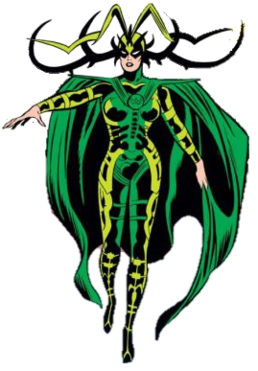
Hela is a fictional character appearing in American comic books published by Marvel Comics. She is based on the goddess Hel from Norse mythology, and was first adapted by Stan Lee and Jack Kirby in Journey into Mystery #102. Hela is the Asgardian Goddess of Death who serves as the ruler of Hel and Niflheim. The character is usually depicted as an adversary of the superhero Thor.
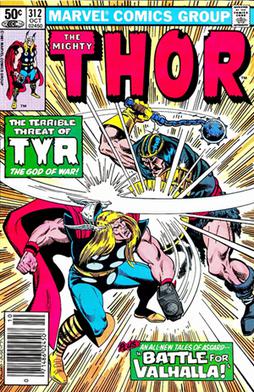
Tyr is a fictional character, an Asgardian god appearing in American comic books published by Marvel Comics. The character is based on the Norse god of the same name. Along with Thor and Balder, he is one of Odin's biological sons.

The Valkyrior is a fictional organization appearing in American comic books published by Marvel Comics. Based on the Valkyries of Norse mythology, the group, created by Stan Lee and Jack Kirby, first appeared in Thor #133. Within the context of Marvel's shared universe, the Valkyrior is a group of female warriors led by Brunnhilde / Valkyrie that was originally designated by Odin to bring the souls of slain heroes to Valhalla. In 2013, the team became the subject of the short-lived series, The Fearless Defenders.

Valkyrie Profile: Covenant of the Plume is a tactical role-playing game developed by tri-Ace and published by Square Enix for the Nintendo DS handheld game console. Released in 2008 in Japan and 2009 worldwide, the game is the third entry in the Valkyrie Profile series, acting as a prequel to the original game.
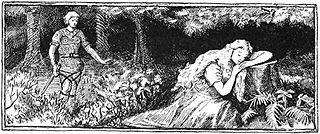
Skáldskaparmál is the second part of the Prose Edda, compiled by Snorri Sturluson. It consists of a dialogue between Ægir, the divine personification of the sea, and Bragi, the god of poetry, in which both stories of the Æsir and discourse on the nature of poetry are intertwined. The work additionally includes tales of human heroes and kings. The overarching mythological setup gradually fades and the work becomes more of an early form of a poetic thesaurus of Old Norse, presumably intended for usage by skalds. Much of the work is focused on poetic phrases and descriptors. The origin of these kennings is given; Bragi delivers a systematic list of kennings for various Æsir, people, places, and things. He then goes on to discuss poetic language in some detail, in particular heiti, essentially poetic synonyms or alternate words. For example, the simple hestr, "horse", might be replaced by jór, "steed".

The characters of the God of War video game franchise belong to a fictional universe based on Greek mythology and Norse mythology. As such, the series features a range of traditional figures, including those from Greek mythology, such as the Olympian Gods, Titans, and Greek heroes, and those from Norse mythology, including the Æsir and Vanir gods and other beings. A number of original characters have also been created to supplement storylines.

Magnus Chase and the Gods of Asgard is a trilogy of fantasy novels based on Norse mythology written by American author Rick Riordan and published by Disney-Hyperion. It is set in the same universe as the Camp Half-Blood Chronicles and The Kane Chronicles series. The first book, The Sword of Summer, was released on October 6, 2015. The second book, The Hammer of Thor, was released on October 4, 2016. The Ship of the Dead, the third book, was released on October 3, 2017.

Valkyrie Anatomia: The Origin was a role-playing video game developed by Dokidoki Groove Works and published by Square Enix for Android and iOS. The game is set in an alternate world from Valkyrie Profile and was released in Japan in April 2016 and worldwide in April 2019. The worldwide server of the game was shut down in August 2020 and the Japanese one in April 2021.

The Ship of the Dead is a young-adult fantasy novel based on Norse mythology written by American author Rick Riordan. It is the third and final novel in the Magnus Chase and the Gods of Asgard trilogy, preceded by The Hammer of Thor. It was released on October 3, 2017, by Disney-Hyperion, an imprint of Disney Book Group. The novel is narrated in the first-person view by Magnus Chase, 16-year-old demigod and homeless orphan. He and his crew sail to the farthest borders of Jotunheim and Niflheim in pursuit of Asgard's greatest threat.
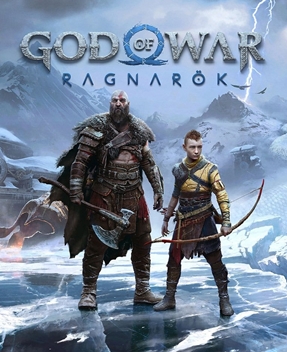
God of War Ragnarök is a 2022 action-adventure game developed by Santa Monica Studio and published by Sony Interactive Entertainment. It was released worldwide on November 9, 2022, for both the PlayStation 4 and PlayStation 5, marking the first cross-generation release in the God of War series, and was released for Windows on September 19, 2024. It is the ninth installment in the series, the ninth chronologically, and the sequel to 2018's God of War. Loosely based on Norse mythology, the game is set in ancient Scandinavia and features series protagonist, Kratos, and his now teenage son, Atreus. Concluding the Norse era of the series, the story follows Kratos and Atreus' efforts to prevent the nine realms from being destroyed by Ragnarök, the eschatological event which is central to Norse mythology and was foretold to happen in the previous game after Kratos killed the Aesir god Baldur.

Valkyrie Elysium is an action role-playing video game developed by Soleil and published by Square Enix. It was released on September 29, 2022 for PlayStation 4 and PlayStation 5, and on November 11 for Windows. Part of the Valkyrie Profile series, it was the first home console installment in more than 15 years, and the third overall. Like its predecessors, the game is significantly based on Norse mythology, and follows Maria, a valkyrie who is created to find and purify souls to help an injured Odin defeat Fenrir, during Ragnarok. Elysium, a spiritual sequel, uses an action, rather than turn-based, battle system. The game received mixed reviews from critics, who praised the game's character design, artwork, combat system, voice acting, and music, but the narrative was criticized as weak, and the graphical quality was seen as low-budget, with environments lacking in detail or things to interact with.
